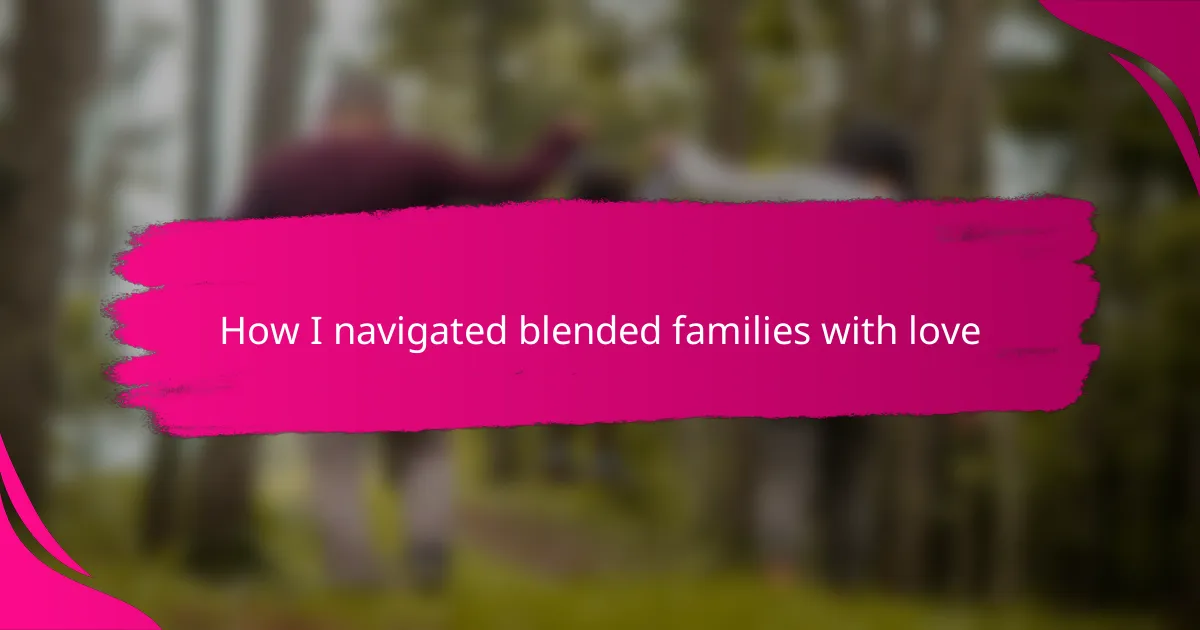Key takeaways
- Building trust in blended families involves honest communication and creating a safe space for sharing feelings.
- Establishing routines and boundaries helps provide stability and clarity, fostering a sense of security among family members.
- Supporting children’s emotional needs requires active listening and validating their feelings, promoting emotional honesty.
- Creating shared traditions, big or small, can strengthen family bonds and create a sense of belonging for all members.
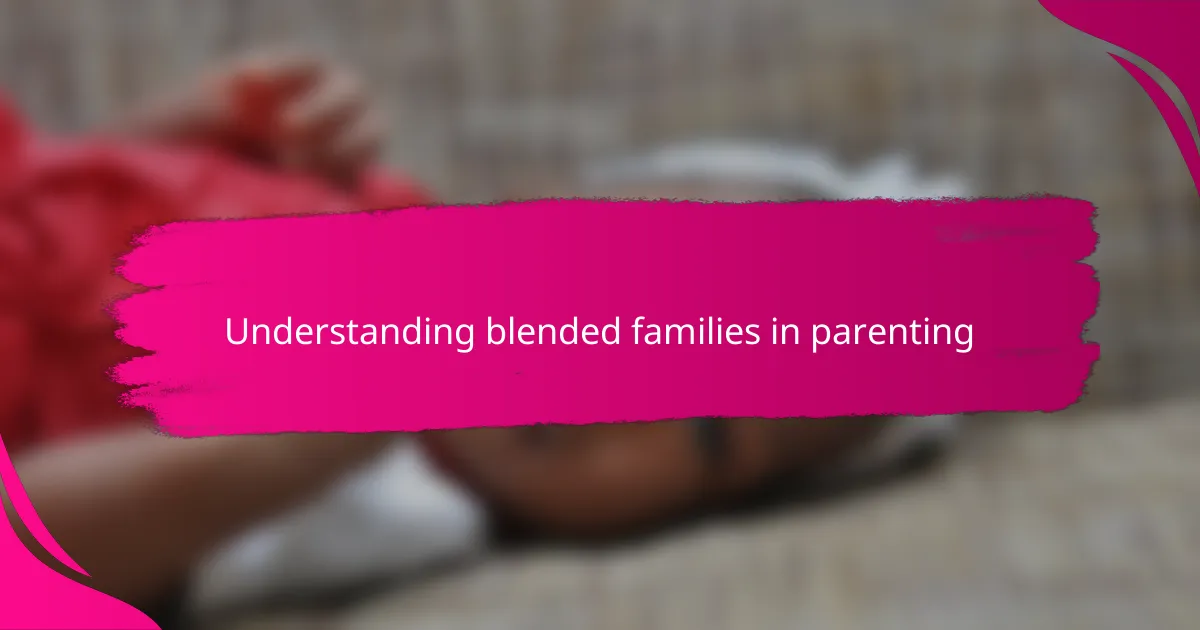
Understanding blended families in parenting
Blended families are unique by nature, often bringing together children, parents, and even extended family members with very different backgrounds and experiences. I remember feeling overwhelmed at first, wondering how to create a sense of unity when everyone seemed to speak a different emotional language. Have you ever noticed how patience and empathy suddenly become your closest allies in these situations?
What struck me most was realizing that blended family dynamics constantly evolve—there’s no fixed roadmap. One day, a simple shared meal felt like a breakthrough, and the next, old insecurities popped up again. How do we stay grounded when emotions run high and loyalties are tested?
In my experience, understanding blended families means accepting complexity without trying to force perfection. It’s about celebrating small connections and recognizing that love doesn’t always look traditional—it’s messy, patient, and wonderfully resilient. Have you found this to be true in your own family journey?
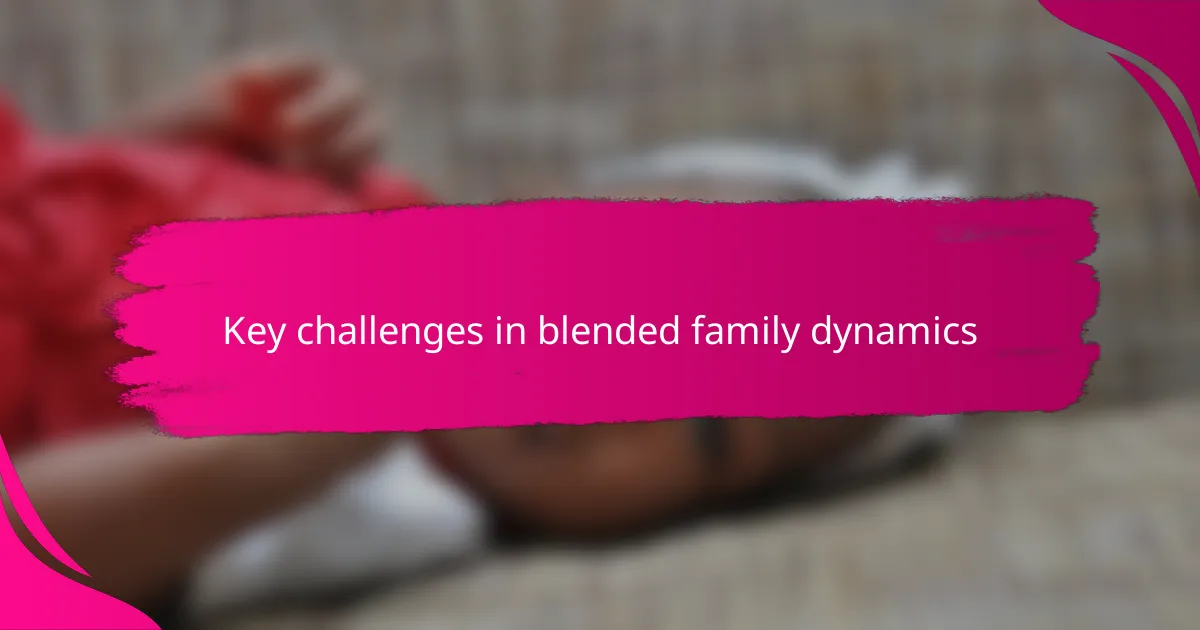
Key challenges in blended family dynamics
One of the toughest challenges I faced was balancing loyalty without making anyone feel left out. It’s easy to unintentionally create “sides,” especially when kids are still adjusting to new parental figures. Have you ever caught yourself worrying if you’re being fair enough or if someone feels more distant? That constant self-check kept me humble and reminded me to listen more carefully.
Another tricky part was navigating the mix of different parenting styles. What felt natural to me sometimes clashed with what my partner believed was best. It forced me to rethink not only how I discipline or support kids but also how to collaborate without friction. Have you experienced those moments when you had to pause and ask, “How can we find common ground for the kids’ sake?”
Emotions in blended families can swing wildly, from excitement about new bonds to grief over old losses. I learned that acknowledging these feelings openly, even the uncomfortable ones, made relationships more authentic. Isn’t it ironic that the hardest conversations often bring us closer? Facing those emotional waves head-on was necessary for building trust and lasting love.
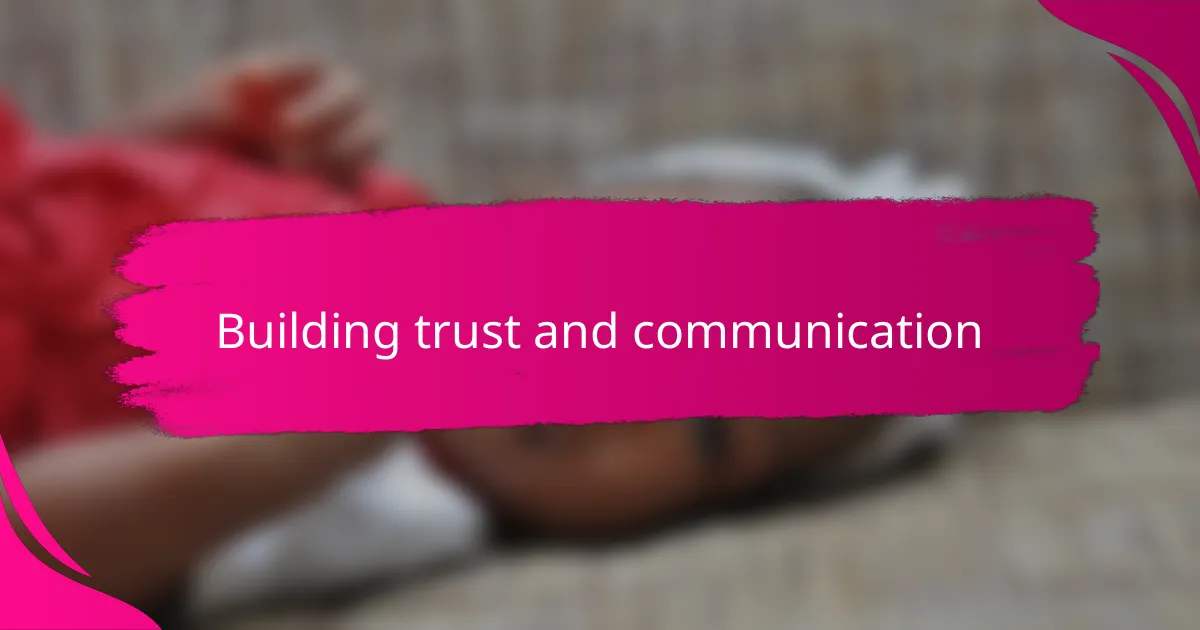
Building trust and communication
Building trust started for me with small, honest conversations—even when they felt awkward or uncomfortable. I remember one evening when my stepchild surprised me by sharing a fear about fitting in; that moment deepened our connection more than any grand gesture could. Have you ever noticed how simply being present and truly listening can crack open the toughest shells?
Communication isn’t just about talking; it’s about creating space where everyone feels safe to express their feelings without judgment. I found that regular check-ins, where we all shared highs and lows of the day, helped to build that safety. What if you approached your family talks as chances to understand, not just to be understood?
Trust also grows through consistency—showing up in the same supportive way day after day. I’ve seen how kids in blended families start to relax when they know what to expect from each [censured] in their lives. How might your predictable actions be the quiet glue holding your family together?
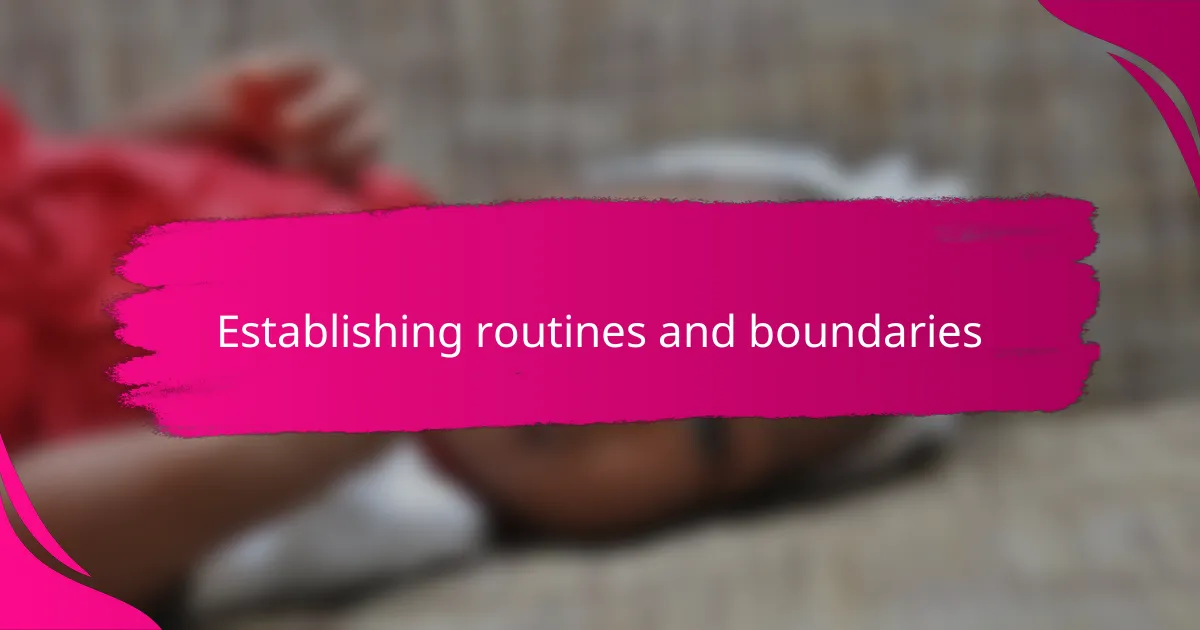
Establishing routines and boundaries
Setting clear routines felt like laying down the first stones of a shared path for our blended family. I noticed that when mealtimes, homework sessions, and bedtime happened around the same time every day, it created a comforting rhythm that kids could rely on amidst all the changes. Have you found that predictable moments calm the chaos and give everyone a little breathing room?
Boundaries, I quickly realized, weren’t walls but gentle guidelines that helped protect everyone’s sense of safety and respect. For example, agreeing on how to handle discipline between my partner and me kept mixed messages at bay and made the kids feel more secure. Do you ever wonder how much clearer relationships become when expectations are spelled out with kindness and consistency?
At first, enforcing these routines and boundaries felt rigid, but over time they became acts of love—acts that said, “I see you, I respect your needs, and I’m here for you.” It’s in those steady, sometimes small gestures that trust took root. Could it be that the structure we often resist is exactly what helps blended families grow stronger together?
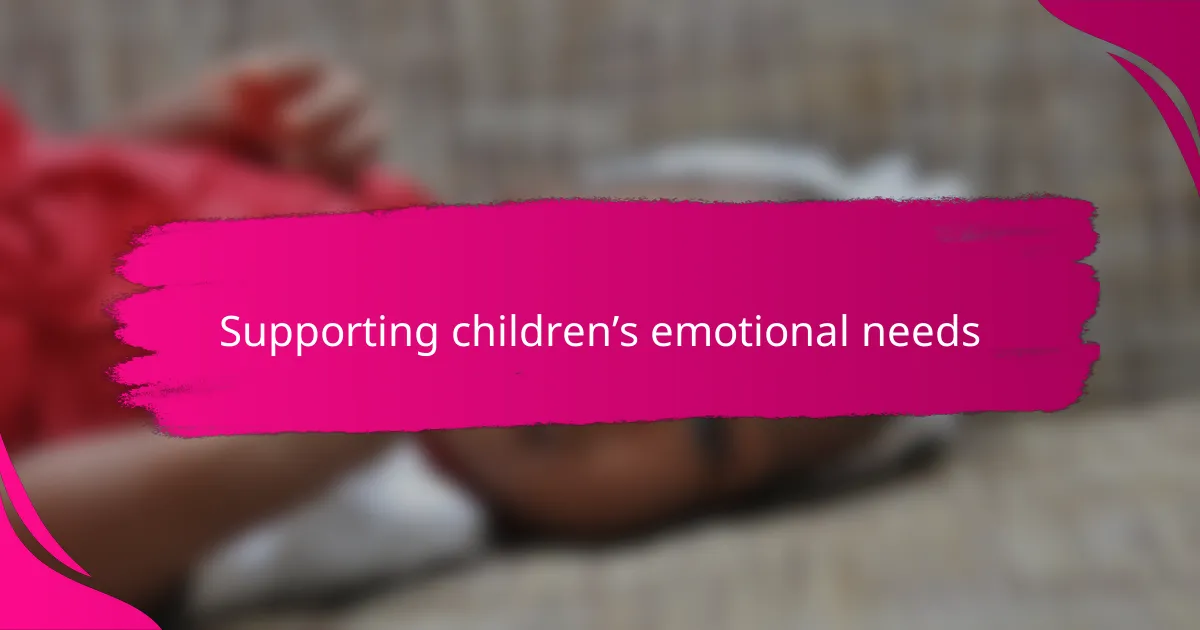
Supporting children’s emotional needs
Supporting children’s emotional needs meant tuning into feelings that weren’t always easy to name. I recall one afternoon when my stepchild suddenly withdrew after a fun outing; asking gently, I learned it wasn’t about the outing but missing their other parent. Have you noticed how sometimes the quiet moments speak the loudest?
Creating a safe emotional space involved patience and reassurance, especially when kids felt torn between loyalties. I made it a point to validate their feelings without rushing to fix them—because sometimes what they needed most was simply to be heard. Have you ever tried listening without offering solutions and found it surprisingly powerful?
It also helped me to model emotional honesty. When I shared my own struggles about blending families, it showed the children that it’s okay to feel complicated emotions without shame. I wonder, how might opening up yourself encourage your kids to share more freely?
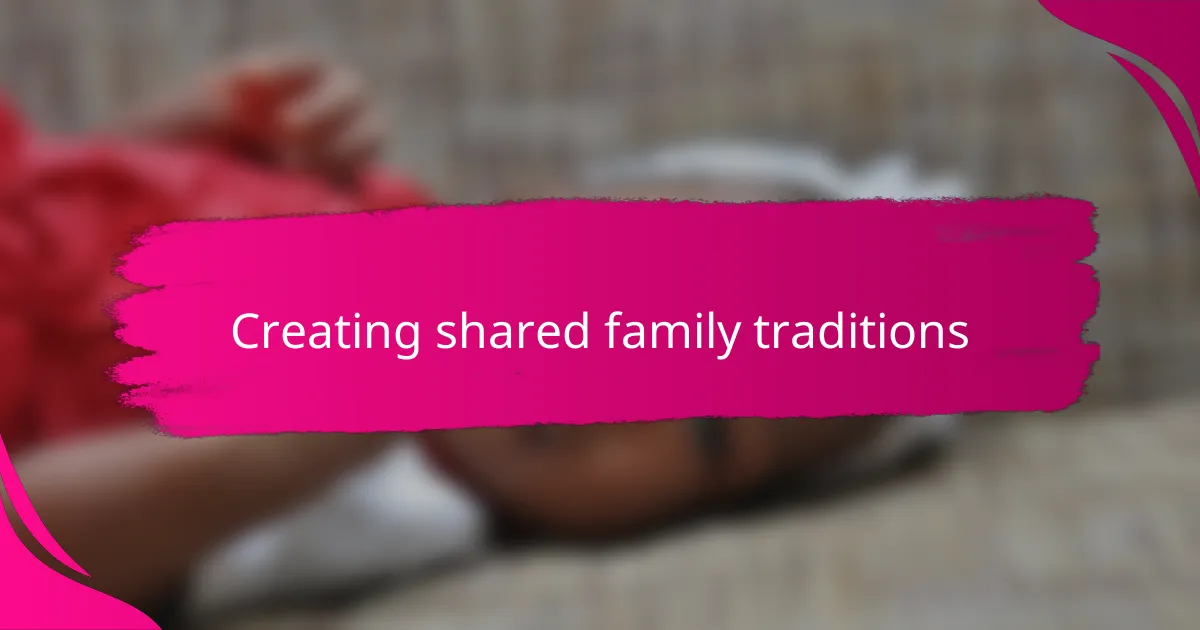
Creating shared family traditions
Creating shared family traditions became one of my favorite ways to bring us closer. I remember the first time we all gathered to bake holiday cookies—it felt like more than just making treats; it was about creating memories that belonged to all of us. Have you ever noticed how a simple tradition can quietly weave everyone’s stories into one tapestry?
It wasn’t always easy to find activities that resonated with every family member, especially when interests and ages varied. We experimented with movie nights, game evenings, and even casual backyard picnics until something clicked for everyone. What’s your go-to tradition that makes your blended family feel uniquely yours?
What struck me most was how these shared rituals didn’t have to be grand gestures. Sometimes, it was the small moments—like a weekly round of “high and low” sharing at dinner—that made us feel connected and cherished. Isn’t it amazing how traditions, big or small, can give family members a reassuring sense of belonging?
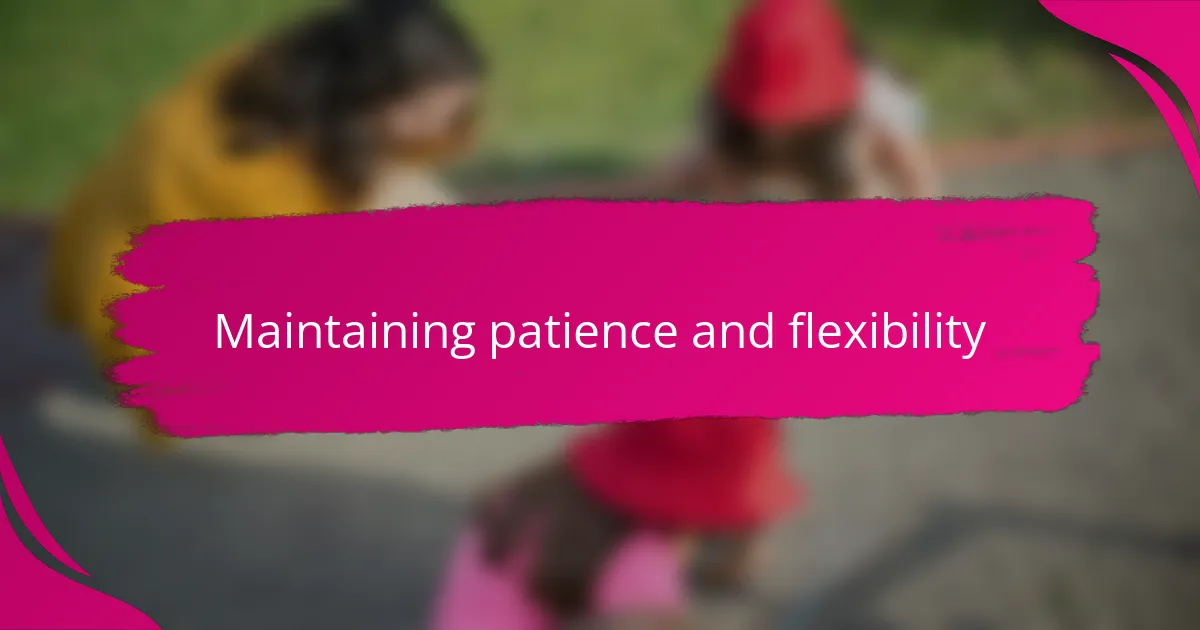
Maintaining patience and flexibility
Patience felt like the toughest lesson for me. There were days when progress seemed slow, and old habits resurfaced, testing my calm. Have you ever wondered how patience can sometimes feel less like a virtue and more like endurance? I found that reminding myself to breathe and stay present made all the difference.
Flexibility became my unexpected ally. Plans changed, moods shifted, and what worked one day might fall apart the next. Instead of resisting, I learned to pivot and adapt—sometimes letting go of my expectations entirely. Isn’t it freeing to let flexibility guide us through the unpredictable rhythms of blended family life?
I also noticed that combining patience and flexibility helped me hold space for everyone’s feelings without judgment. When tensions bubbled up, I’d ask myself, “How can I respond with kindness rather than frustration?” That pause often softened conflicts and opened doors to understanding. Could that simple shift be the key to lasting harmony?
